Welrod Pistol: Allied Assassination Tool
May 9th, 2023
10 minute read
In the dark hours of World War II, the Welrod pistol was born in the quiet English countryside. A masterstroke of British Major Hugh Reeves, the Welrod was designed as a special operations silenced pistol for use behind enemy lines. The grip was easily removed to reduce the chance of being discovered yet it had a full-length integral baffle system that made it one of the quietest suppressed pistols of all time. In this article, Will Dabbs, MD, examines the covert pistol’s design and history. Special thanks to Dylan Casey for providing the original photography for this article.
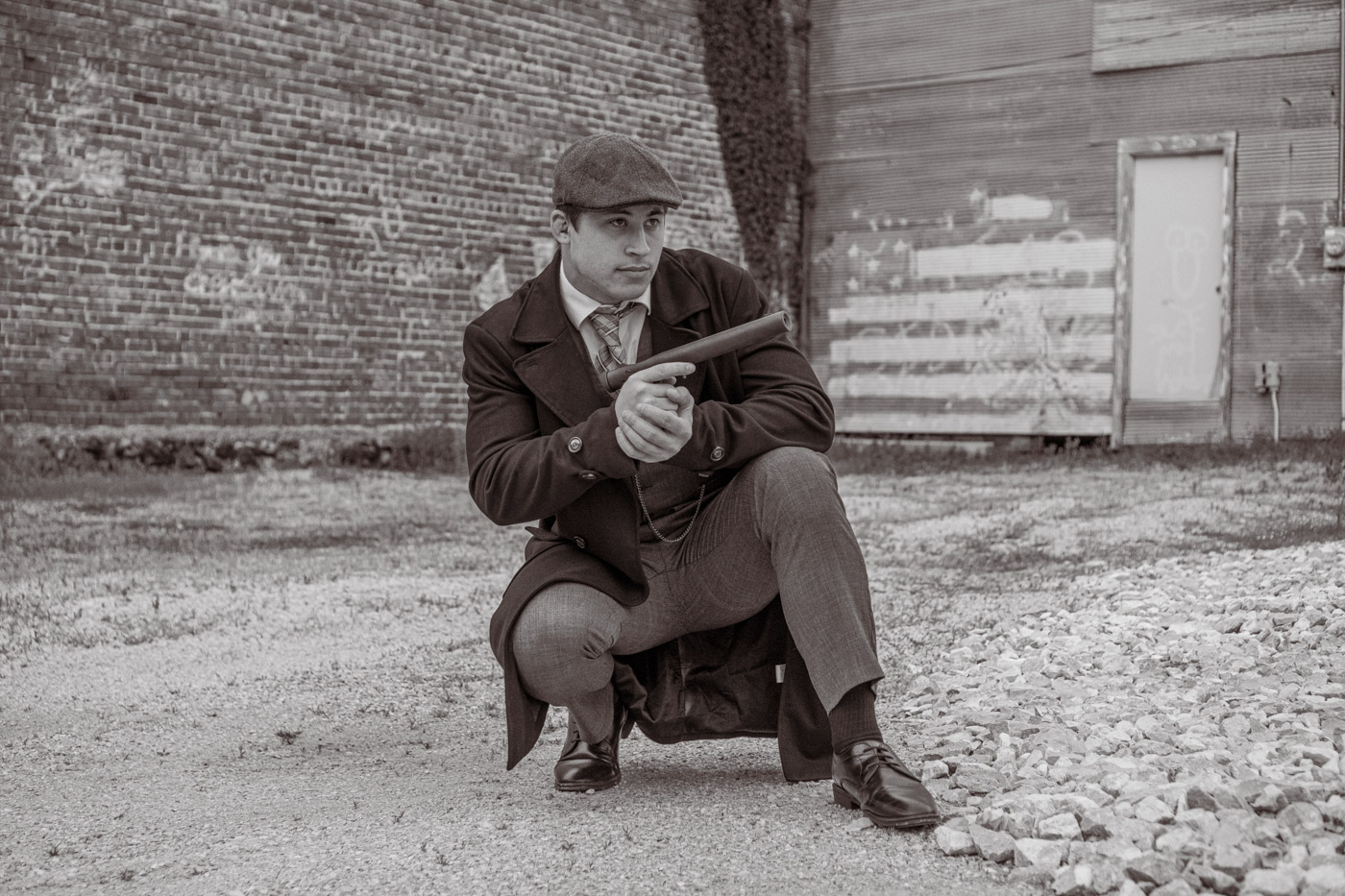
Captain Richard Upman staggered along the dimly lit thoroughfare in wartime Rotterdam, his filthy clothes reeking of ersatz cigarettes and cheap booze. He leaned against the stone wall of a modest apartment block and ran his fingers through his unkempt hair. Passersby, both German and Dutch, subconsciously gave him a wide berth, perfect for his clandestine work.
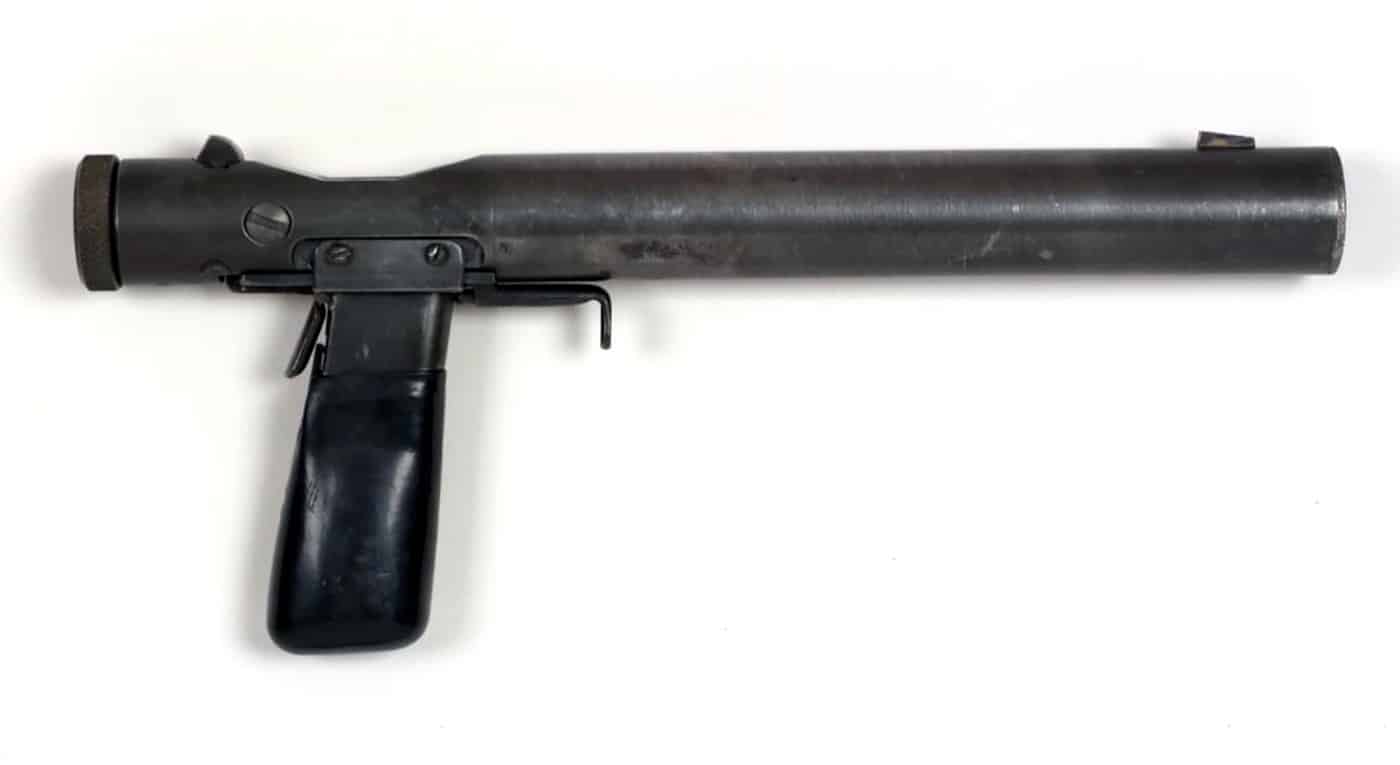
After six months of operating with the Dutch resistance, Upman had become quite adroit at playing the part of a bum. His mother had been from Eindhoven, and he spoke the language without an accent. His dad was a Limey who saw to it he was raised in London and schooled as an Englishman. When war broke out in late 1939, his country had come calling. Now amidst an unpleasant light drizzle, Captain Upman simply waited. Underneath his dirty rags, his heart felt like it would beat out of his chest.
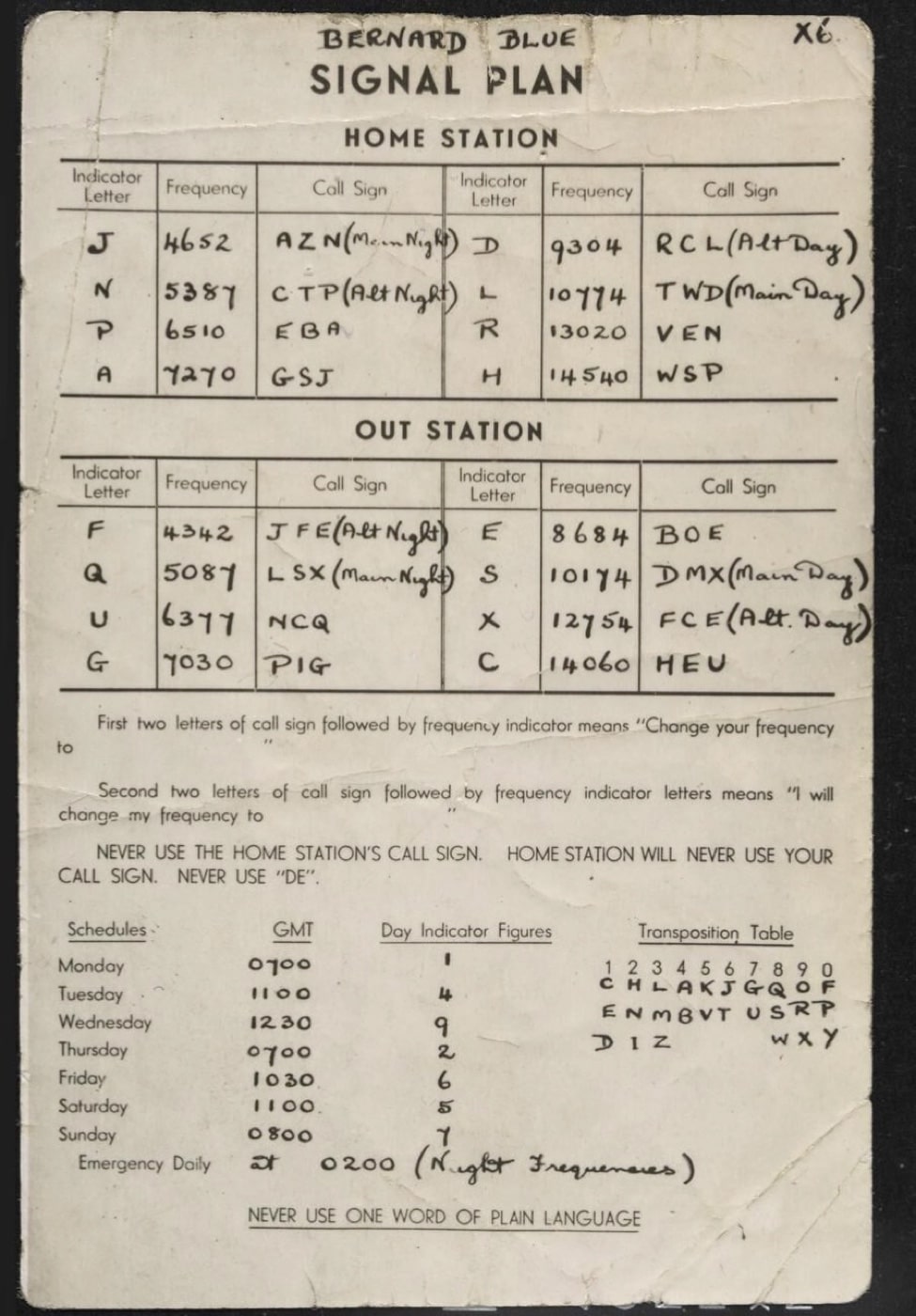
Twenty meters away, a beautiful young woman lingered in the shadows. Grietje Spaans looked like a movie star and moved with a natural grace. That and an uncanny ability to take life like a psychopath had gotten her this job. Upman, for his part, actively ignored her.
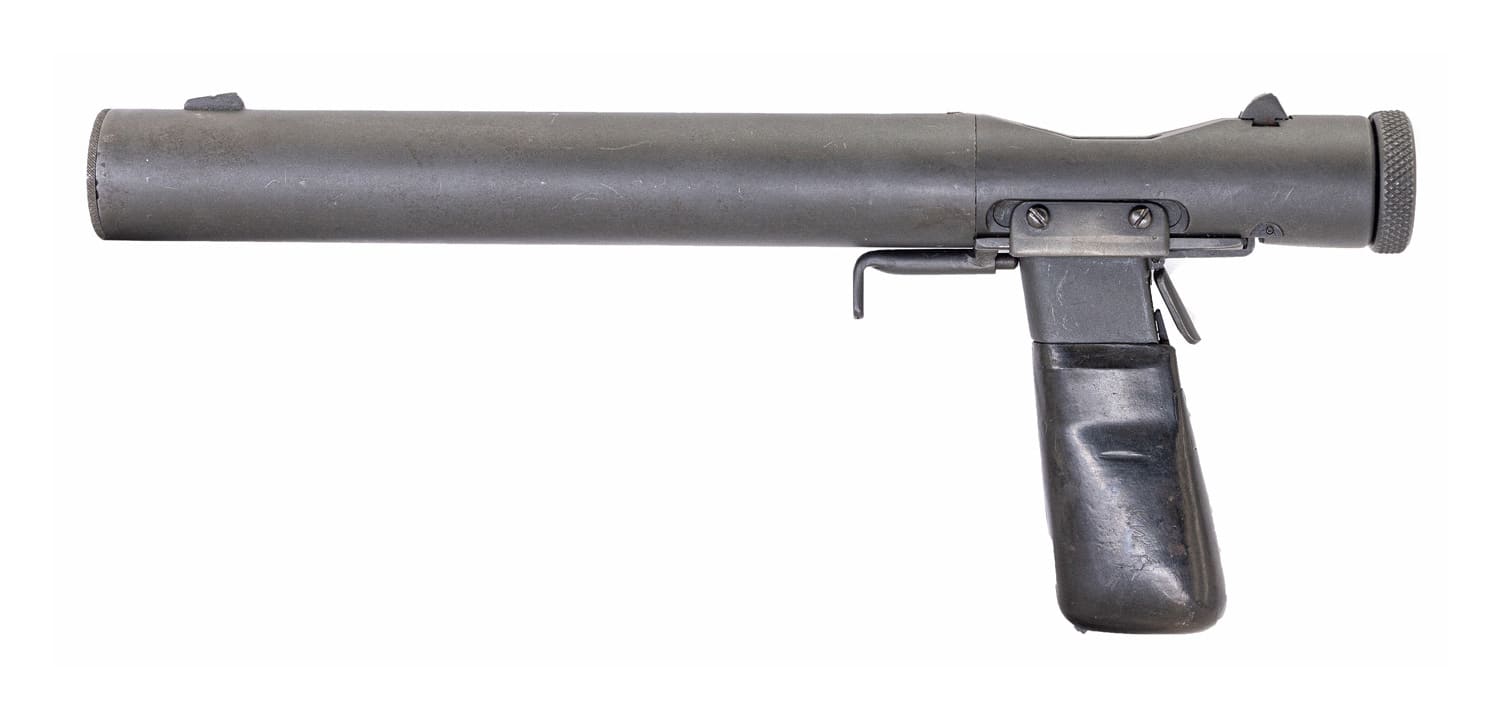
SS Hauptsturmfuhrer Joachim Kleckt commanded the local Einsatzgruppen of the Schutzstaffel. Kleckt and his men were tasked with rounding up downed Allied aircrew and suppressing local dissent. They also processed Dutch Jews for disposition to the camps. Along the way, the Hauptsturmfuhrer and his minions helped themselves to the abandoned possessions of those they indirectly murdered. Joachim Kleckt was a man of expansive appetites. This night that vice would ultimately kill him.
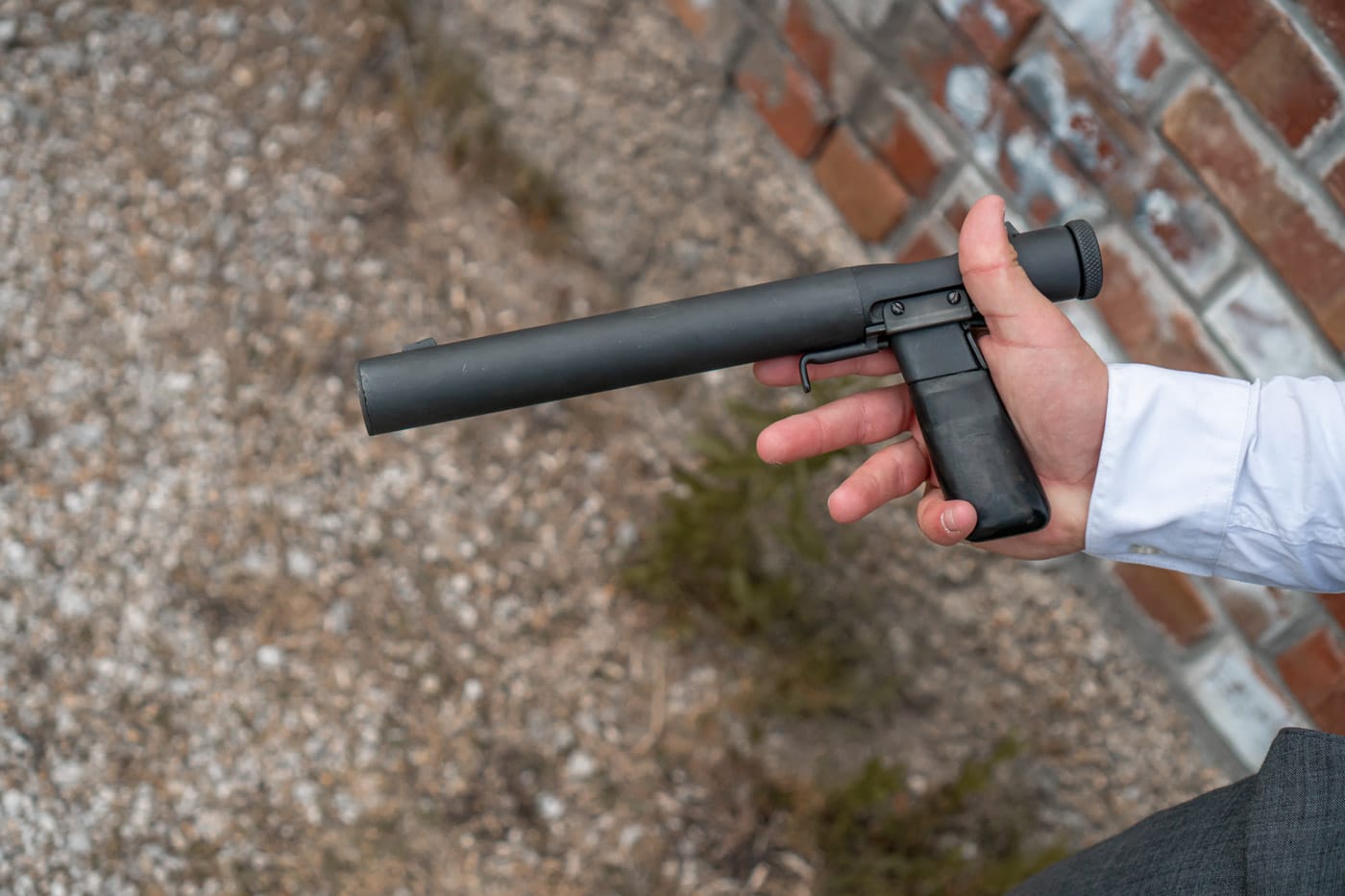
Kleckt maintained a flat in this posh building, and he was diagnosably punctual. At 1835, he stepped out of his heavy Mercedes and made his way toward the front door. His driver pulled the car around to the attached garage behind the structure. For a pregnant moment, Kleckt, Upman, and Spaans were alone. Right on cue, Spaans walked purposefully out of the shadows and toward the door, arriving moments before Kleckt. She made like she was fumbling for her keys only to have the charming Nazi butcher step around her and unlock the door himself with a smile. Men could not help but flirt with her. It was like a superpower. Now lightheaded with anxiety, Cpt. Upman pushed off of the wall and staggered purposefully toward the gleaming couple.
Kleckt saw the filthy wretch approaching and turned to face him, his left hand resting comfortably atop his holstered Luger. Hauptsturmfuhrer Joachim Kleckt was a man accustomed to being feared, and this derelict now threatened his prospects for some fine female companionship.
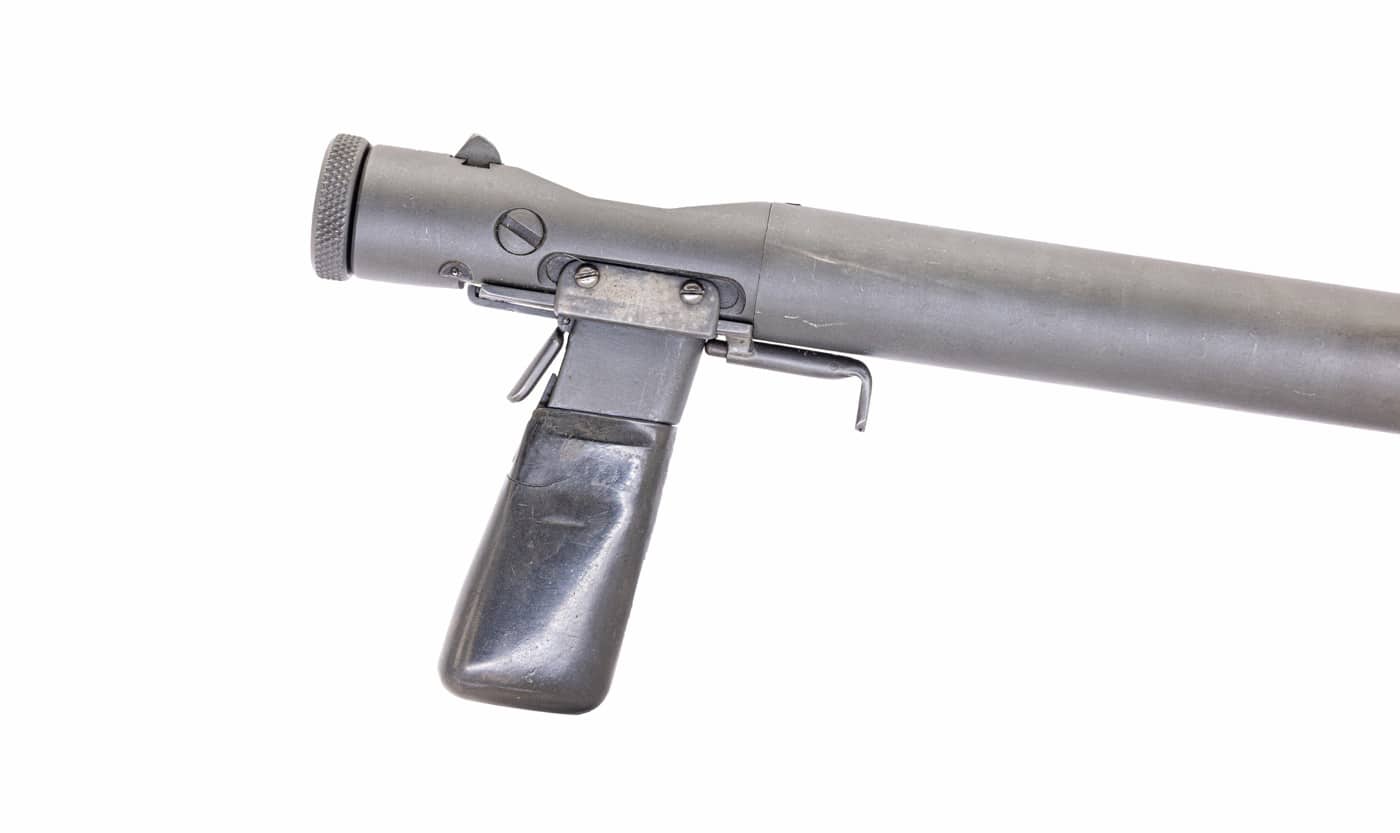
Before he could react, Upman dropped into a crouch and produced what looked like a short length of plumber’s pipe. The little gun coughed and punched a single black .32-caliber hole in the shocked man’s forehead. Kleckt fell as though struck with a sledge.
In half a minute, Upman and Spaans dragged the man into the dark alley from which the girl had emerged. They rifled the German’s pockets and left him to die alone. Even shot through the head, that could take a while. Thanks to Grietje Spaans, Richard Upman, and a compact Welrod sound-suppressed pistol, Hauptsturmfuhrer Joachim Kleckt’s days of packing the death trains were over.
The Mission
World War II changed everything about life on planet Earth. The world’s industrialized nations dealt death on a scale not seen before or since. With national survival teetering in the balance, the major combatants energized their respective manufacturing apparatus to produce the critical materiel necessary to prosecute the war on a global scale. This herculean enterprise manifest on scales both large and small.
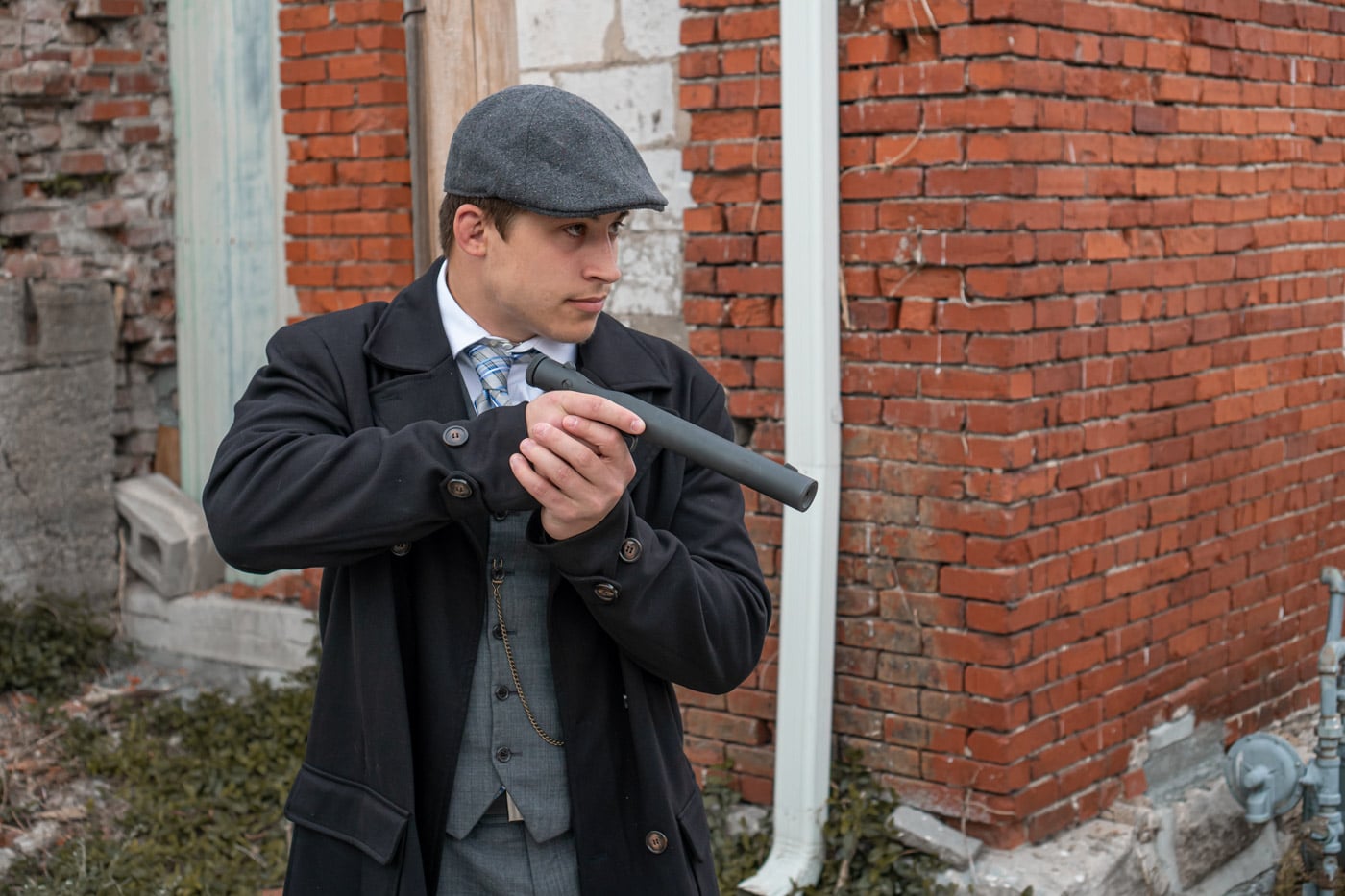
In America, we churned out 6.1 million M1 Carbines. The Russians built six million PPSh submachine guns. The Germans made 1.1 million MP-40 SMGs. Meanwhile, Major Hugh Q.A. Reeves working at Station IX, a think tank previously titled the Inter-Services Research Bureau outside Welwyn Garden City near London, was conjuring something altogether different. Major Reeves was building what was arguably the world’s most effective assassin’s pistol. While much of Station IX activities are secret, Major Reeves is widely acknowledged as the inventor of the Welrod.
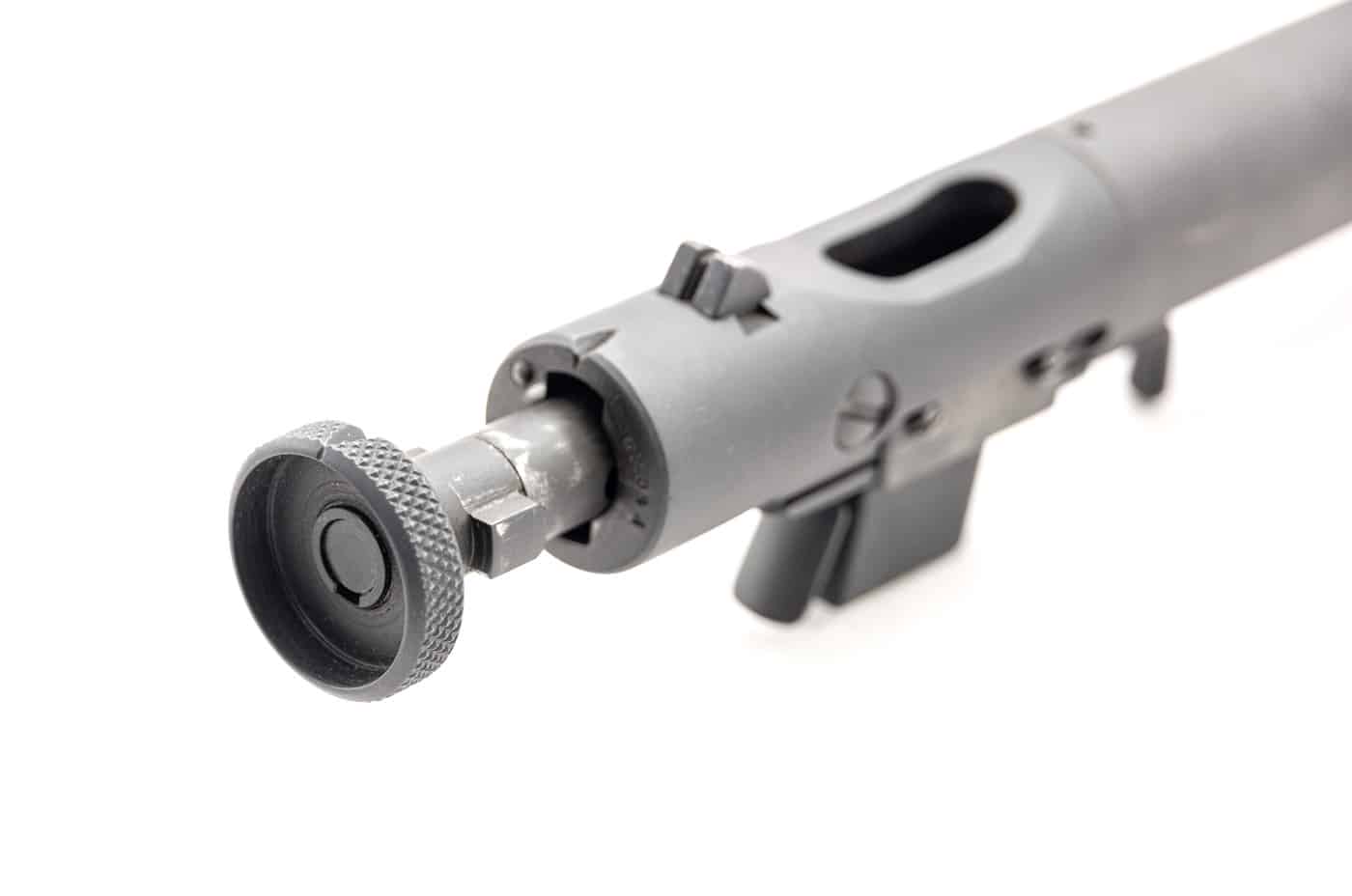
The formal appellation for this weird little gun was the Hand Firing Device. Colloquially it was the Welrod. “Wel” was drawn from Welwyn Garden City. “Rod” was gangland slang for a firearm. This incongruous combination ensured that prying eyes did not find the suppressor-equipped gun’s development particularly interesting.
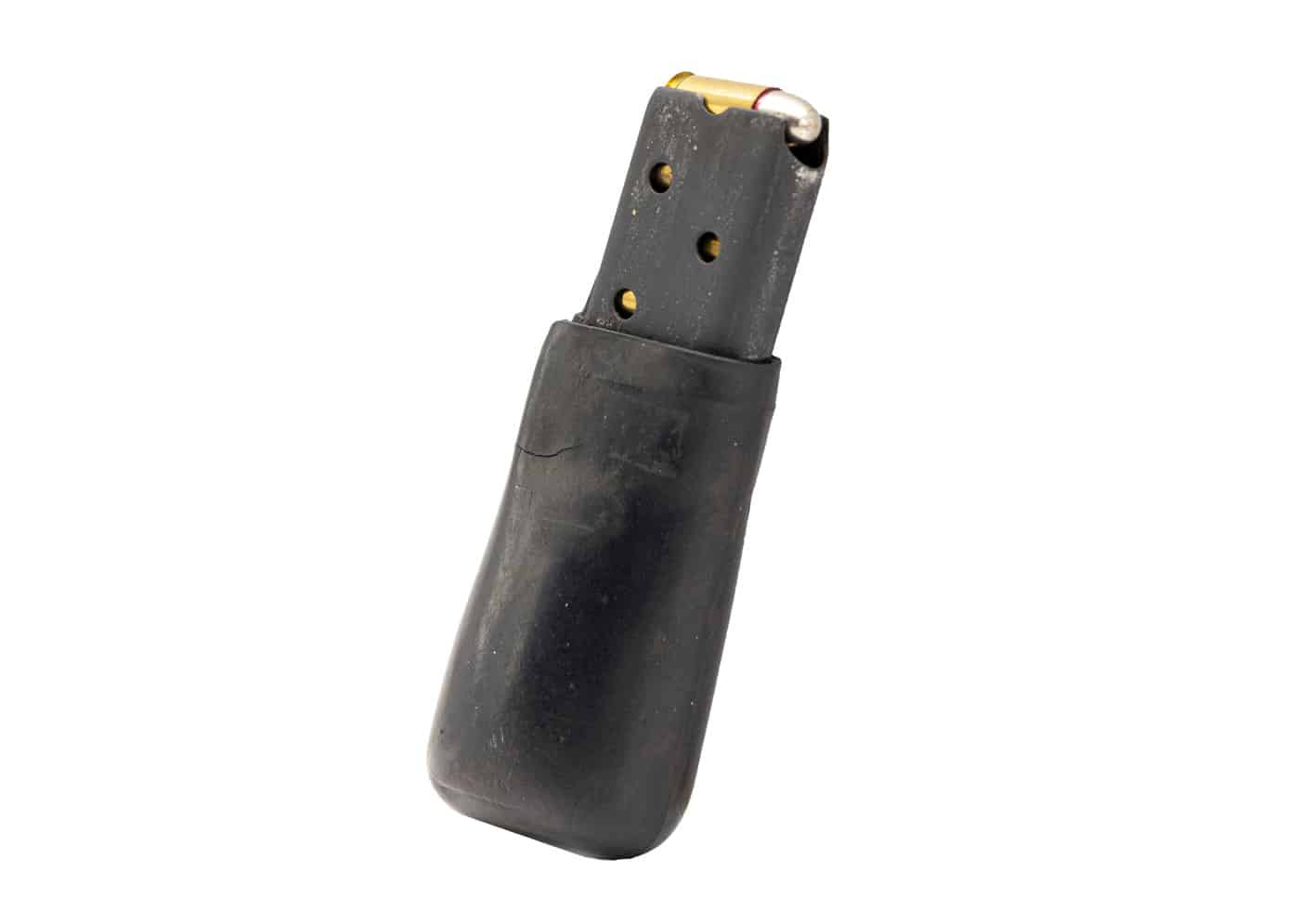
The Welrod was intentionally designed not to look much like a gun. In fact, its users frequently referred to the weapon as a bicycle pump. It consisted of a roughly foot-long 1.25” diameter steel cylinder to which was affixed a stubby magazine well. This well accepted a detachable single-stack magazine that also doubled as a pistol grip. The magazine was covered with a rubber material called Ebonite for reliable purchase when sweaty or anxious. The weapon was originally chambered in .32 ACP. Later versions were in 9mm.
The .32 ACP magazine carried eight rounds, while that of the 9mm packed six. The .32 ACP variant utilized a modified Colt 1903 magazine. The barrel was just over 3” long and featured a series of ports. These ports, particularly on the early .32 ACP versions, were not meant to slow the bullet appreciably. This facet of the design simply depressurized the combustion gases into an enclosed expansion chamber, helping to make the weapon almost unnaturally quiet.
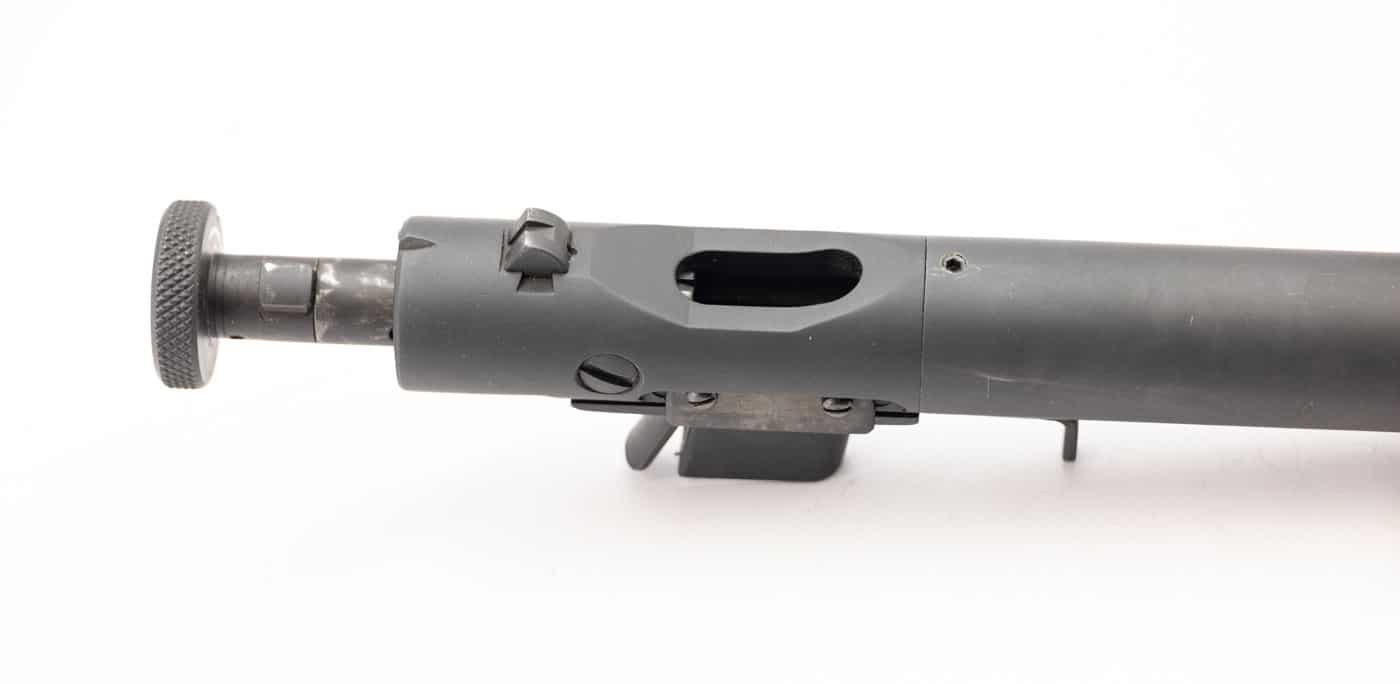
This chamber was followed by either 14 or 18 steel baffles interspersed with three rubber wipes. These wipes were simply solid circular rubber disks. Firing the first round punched holes through all three. This rig was good for about 15 shots before the rubber disks began to degrade.
To fire the gun, you would first insert a loaded magazine. The magazine catch was actually built into the magazine itself rather than the weapon. You then rotated the knurled knob on the back of the gun ninety degrees to the left and pulled it back. Empty cases would be automatically ejected out the top. Pressing the knob forward and locking it in place seated a cartridge. There was a rudimentary grip safety built into the back of the magwell, and the trigger was just a strip of folded steel. In the earliest versions, there was no trigger guard.
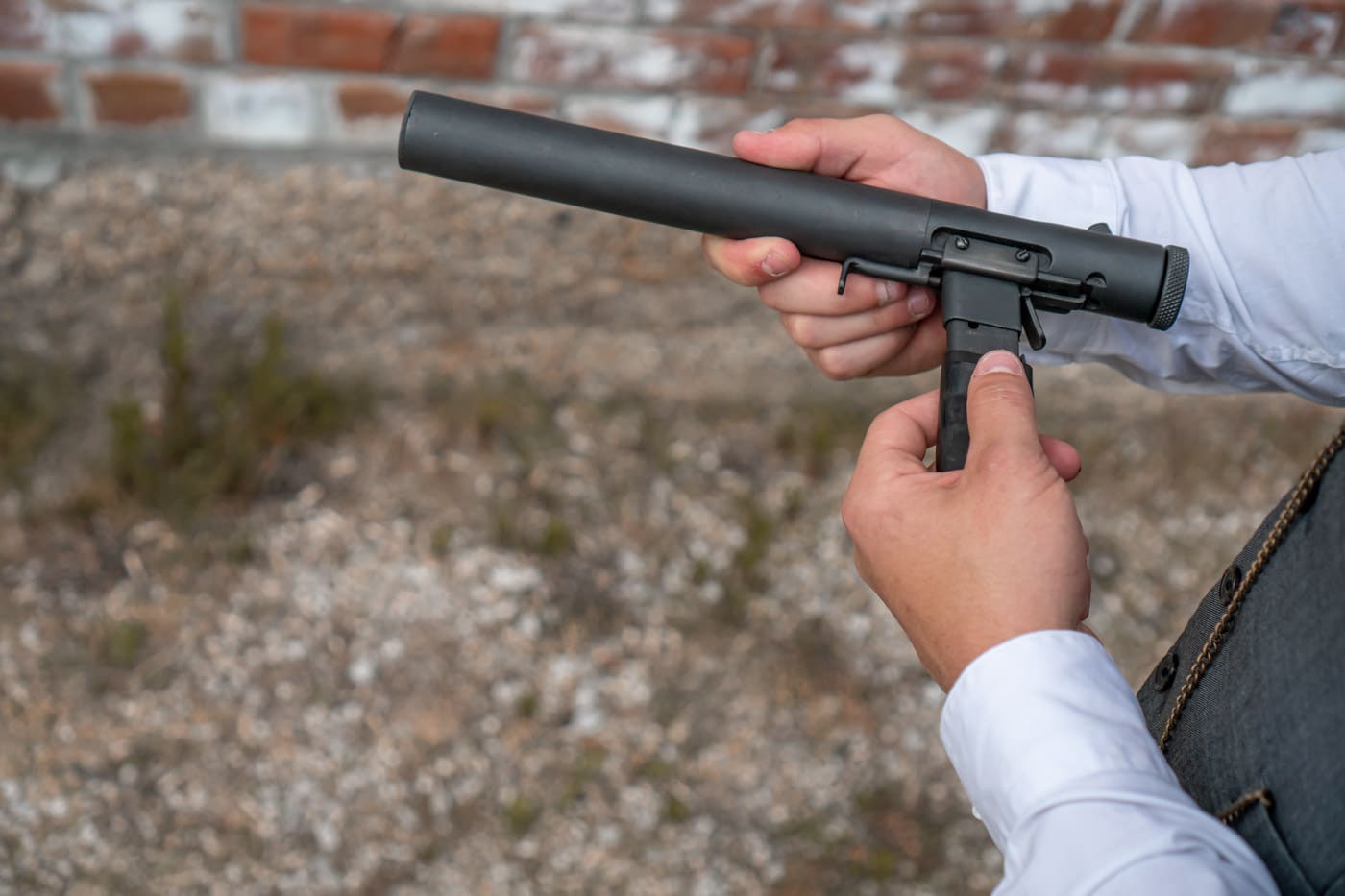
The sights included luminescent inserts, and the muzzle cap was inset slightly to provide a better seal when employed at contact ranges. This was the recommended method of engagement. The effective range was published as 23 meters during the day and 7 meters at night. The use of these sealed wipes made the Welrod one of the most stealthy suppressed firearms ever made. Around 2,800 copies were produced during the war beginning in 1942. The Brits made another 11,000 afterwards. The last known operational use of the Welrod was during the 1991 Gulf War. Welrods are rumored to be maintained in Special Air Service (SAS) armories even today.
Suppressor Design
The Welrod’s integral suppressor is a combination of metal baffles and rubber wipes contained in a detachable sleeve over a vented barrel. The rifled barrel only takes up about half the length of what appears on the “barrel” from the exterior of the gun. Much of what you see is the Welrod’s suppressor.
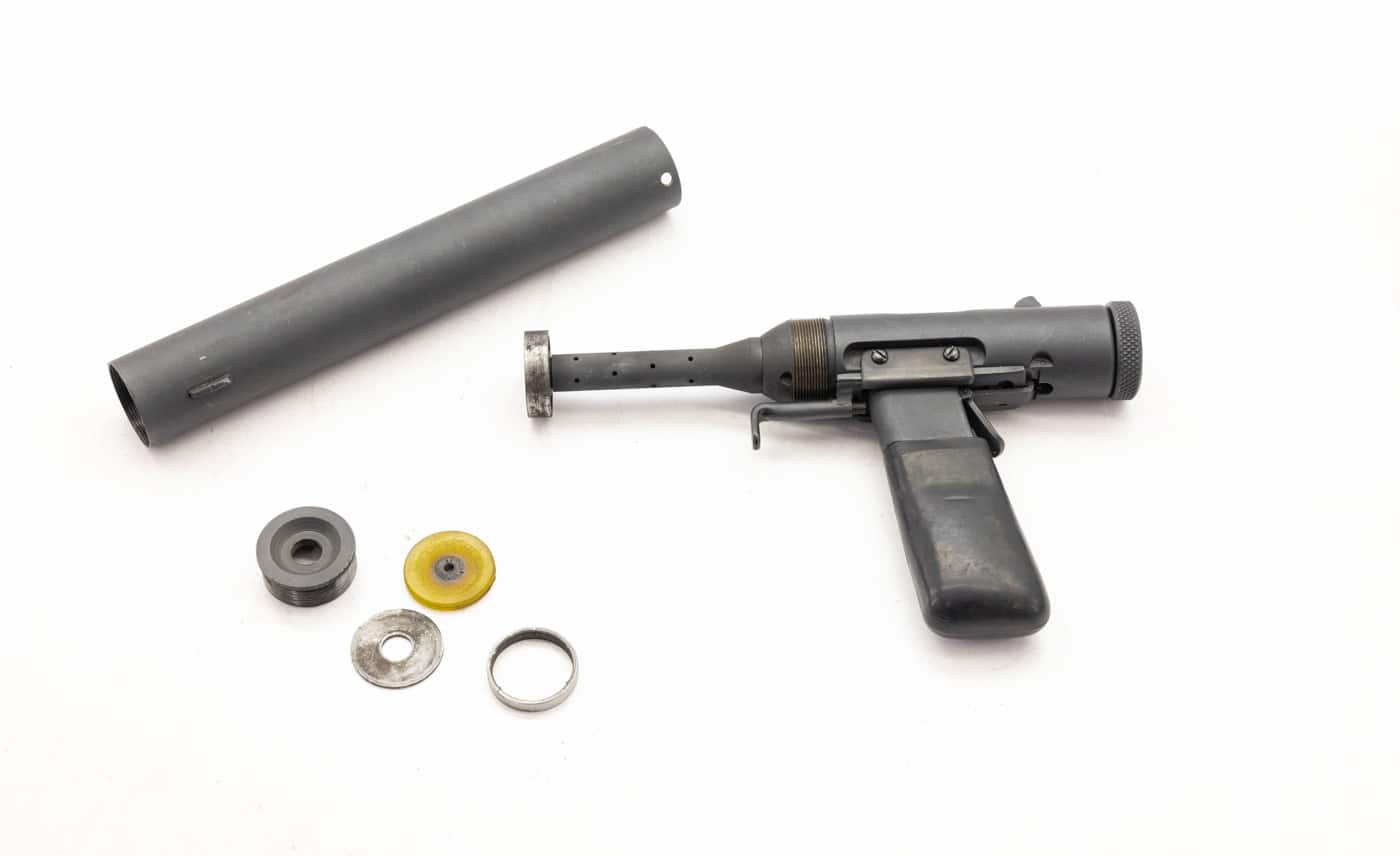
The barrel itself has a series of ports, or holes, that allow hot gasses to escape into the suppressor sleeve to help reduce the sound signature. As the bullet passes the end of the barrel, it passes through a series of wipes that further bleed hot gas away.
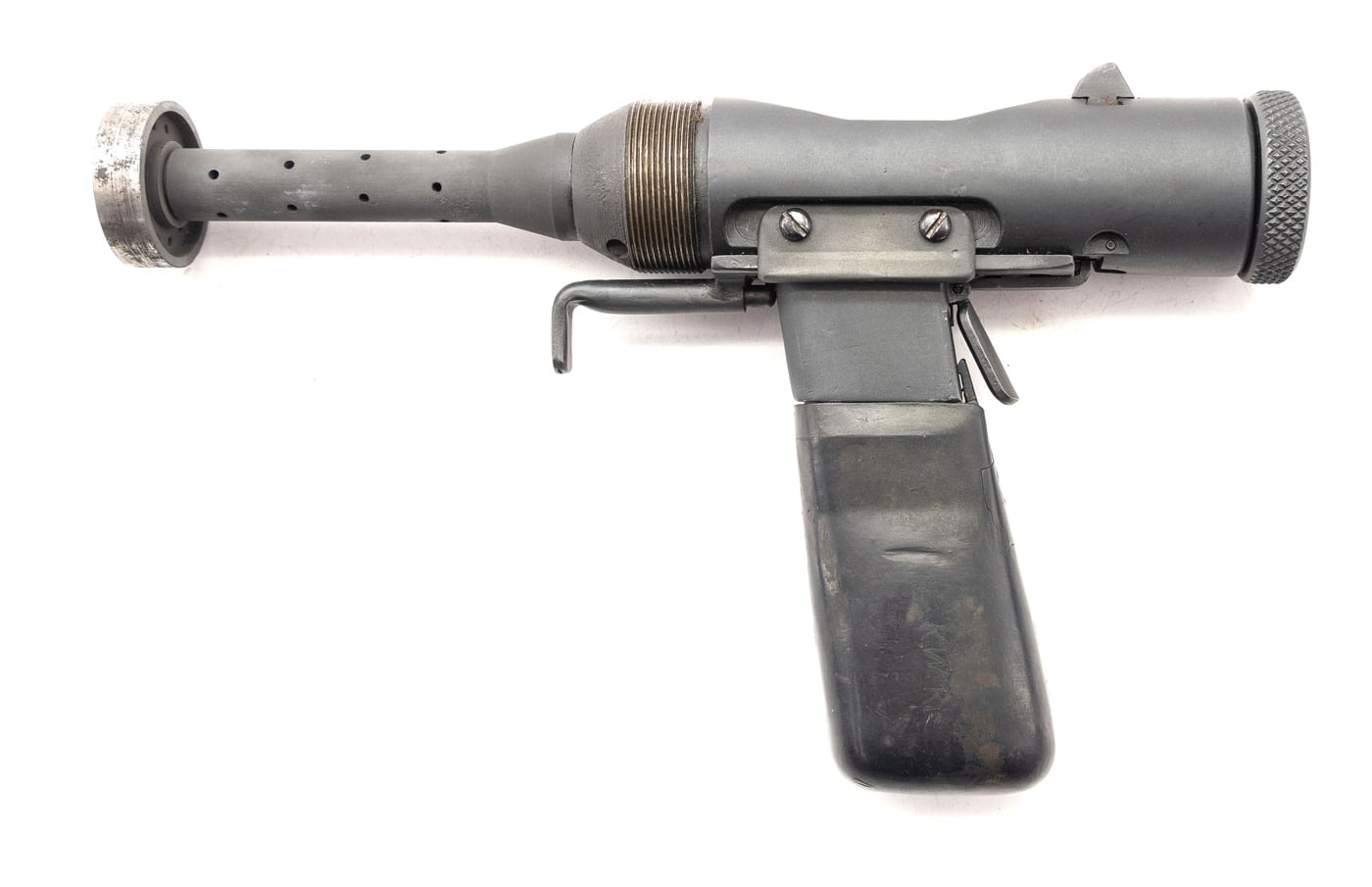
These expansion chambers all worked to cool the gasses and help mask the sound of firing the gun. While no gun is truly silenced, the Welrod is remarkably quiet and is believed by many to use one of the quietest pistol suppressors ever made — even when put up against .22 caliber firearms.
Clean Guns
Original Welrod handguns were devoid of any markings or serial numbers. For a gun that might be used by spies or resistance fighters, having a “clean” gun was essential to deter investigations by the enemy. However, any pistols that are in private hands may be marked in accordance to local laws. Likewise, any laws on suppressors or silencers will apply to this firearm.
Welrod Technical Specifications
| Caliber | .32ACP and 9mm Parabellum models |
| Weight | 48 oz |
| Barrel Length | 3.25″ |
| Overall Length | 14.5″ |
| Method of Operation | Manual bolt action, striker-fired with grip safety |
| Feed System | Metal box magazine with Ebonite coating that served as a grip |
| Magazine Capacity | 8 rounds (.32 ACP) or 6 rounds (9mm) |
| Manufacturer | Birmingham Small Arms Company (BSA) |
Ruminations
Simple and cheap to produce, the Welrod was widely distributed among resistance forces as well as both British Special Operations Executive (SOE) and American Office of Strategic Services (OSS) operatives during WWII. The Welrod also saw fairly significant service with the British Special Air Service (SAS). Though its missions were typically classified, it was supposedly used operationally in WWII, the Korean War, the so-called “troubles” in Northern Ireland and the Falklands War. The Welrod was also issued to soldiers of the American 39th Special Forces Detachment deployed to Berlin for use behind enemy lines should the Cold War ever go hot. The quirky little guns were also popular with U.S. MACV-SOG troops operating in Vietnam.
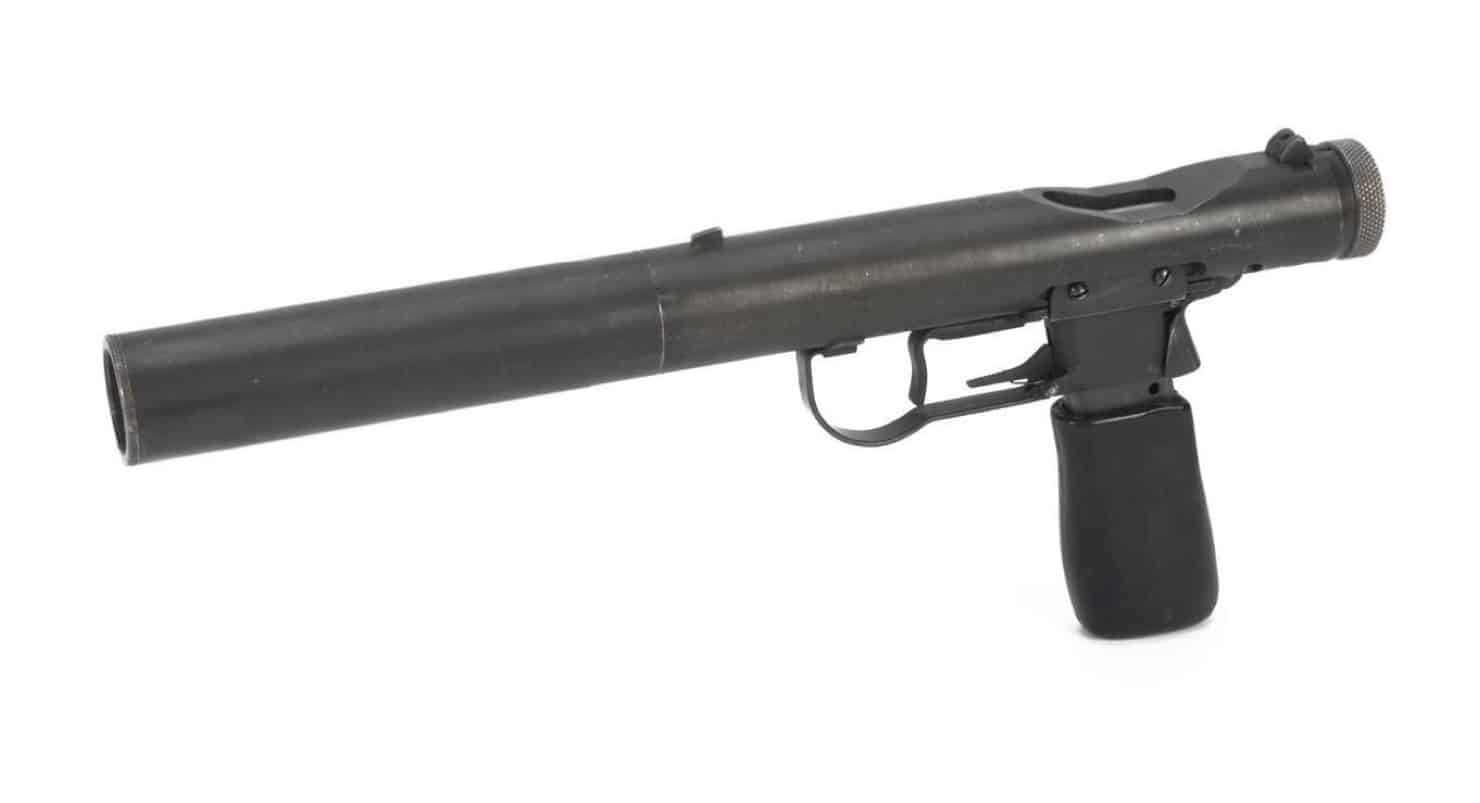
Welrod silenced pistols are generally classed into two versions: the Mk I and the Mk II or IIA. Weirdly, the two versions almost seem backward in their naming, creating some difficulty when conducting research. Original guns were chambered in 32 ACP. These are known as the Welrod Mark II and Mark IIA. Subsequent guns chambered for the more powerful 9mm are known as the Mark I.
Though the .32 ACP Welrod Mk II was the quieter of the two weapons, it was found to be rather underpowered for operational use. The 9mm Mk I was noisier but more effective. The Mk I also included a pressed steel trigger guard and improved grip safety. I have no idea why they called the first one the Mk II and the subsequent model the Mk I, but they did.
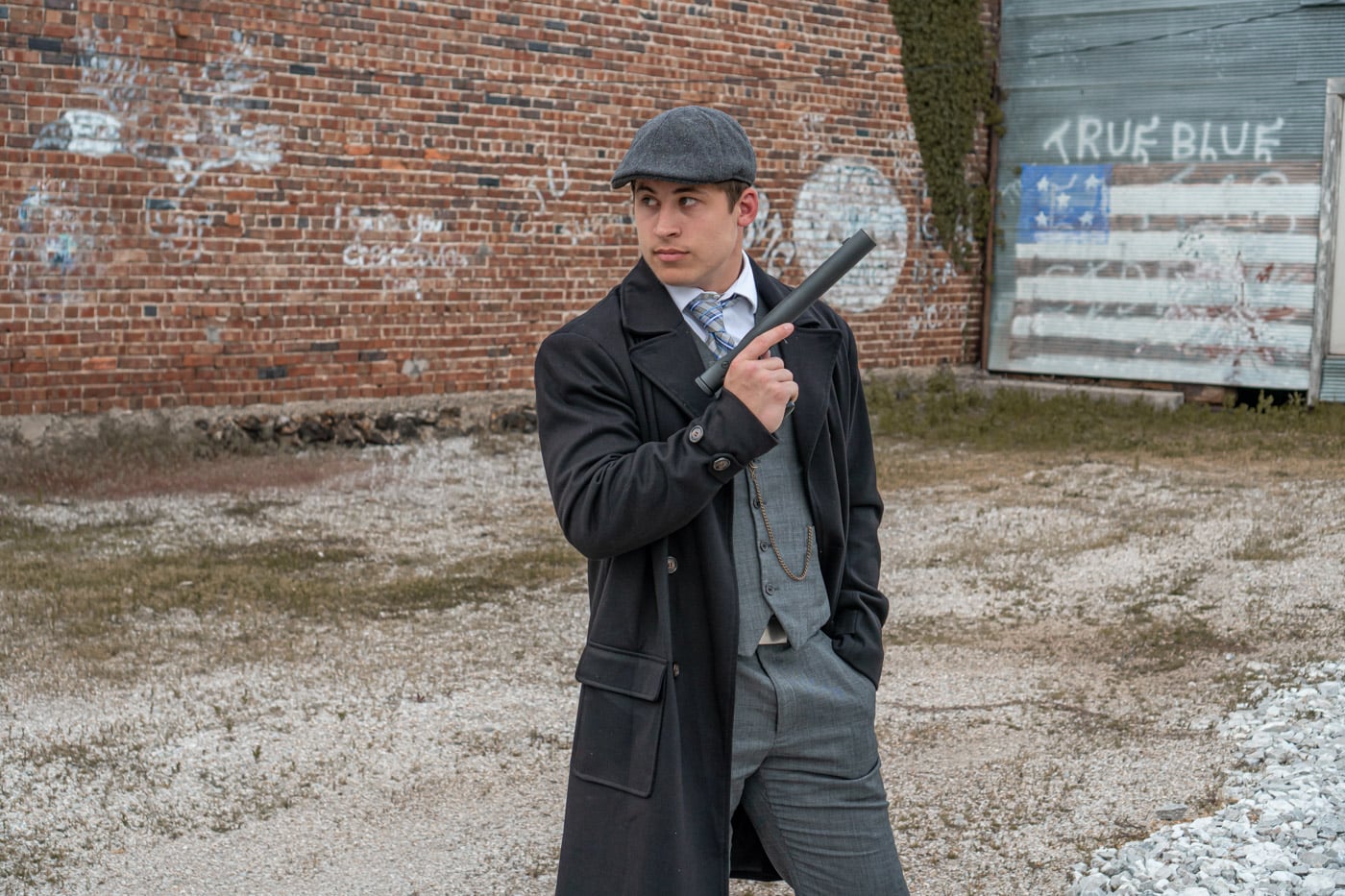
Of course, the Americans didn’t help when we brought them into the U.S. and often referred to them as the Hand Firing Device Mark 1 in much of the documentation at the time.
Weird, crude, and timelessly effective, the Welrod is James Bond kit for the real world.
Editor’s Note: As with any weapon developed for clandestine use in World War II, much of the original documentation was lost, destroyed or classified. Not all Welrod researchers agree on all aspects of its history. The information provided in this article is accurate based on current research. As new information comes to light, we will update this page.
Please be sure to check out The Armory Life Forum, where you can comment about our daily articles, as well as just talk guns and gear. Click the “Go To Forum Thread” link below to jump in!
Join the Discussion
Continue Reading
Did you enjoy this article?

 675
675






